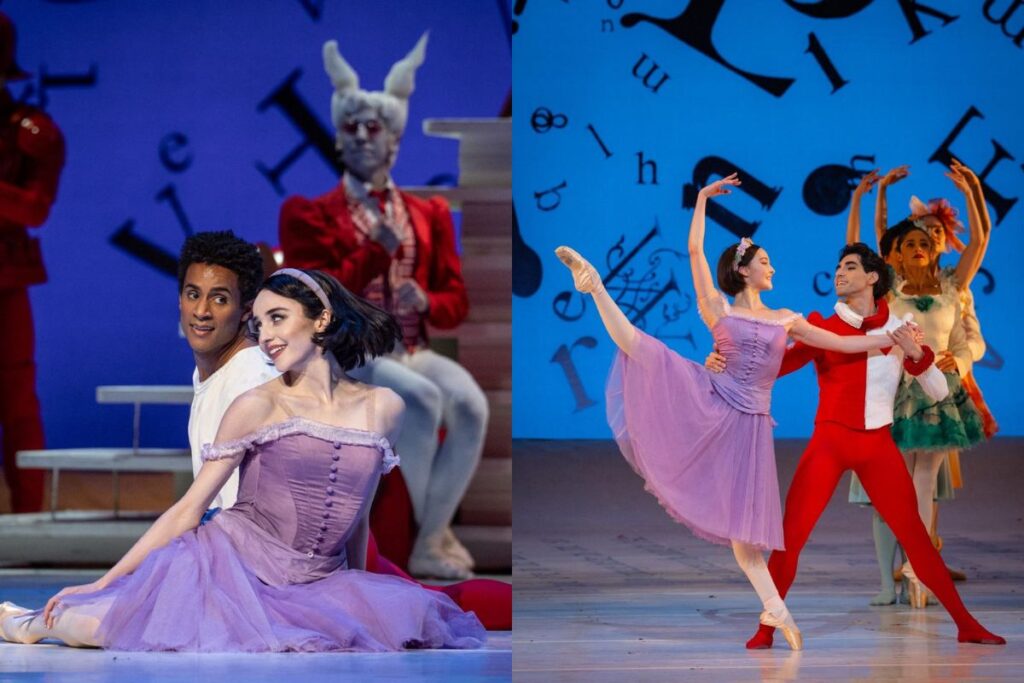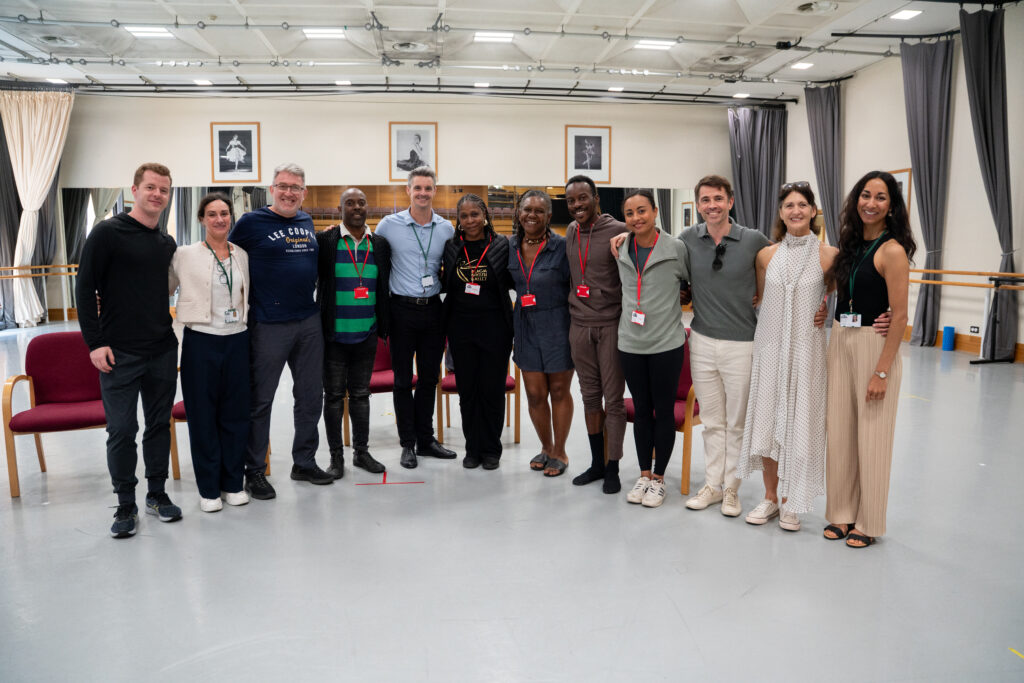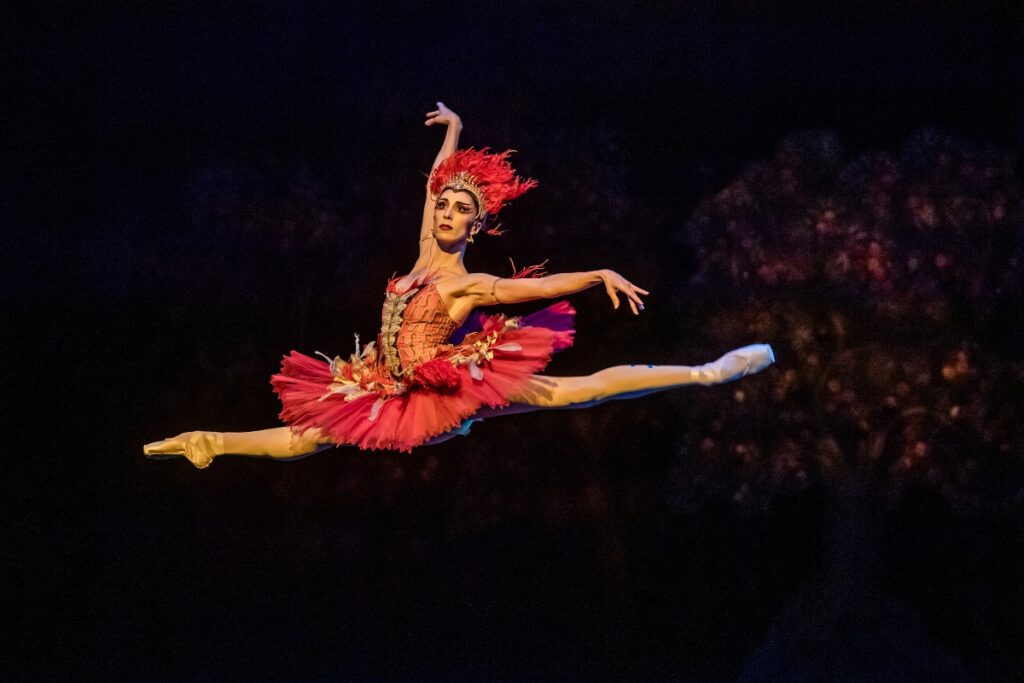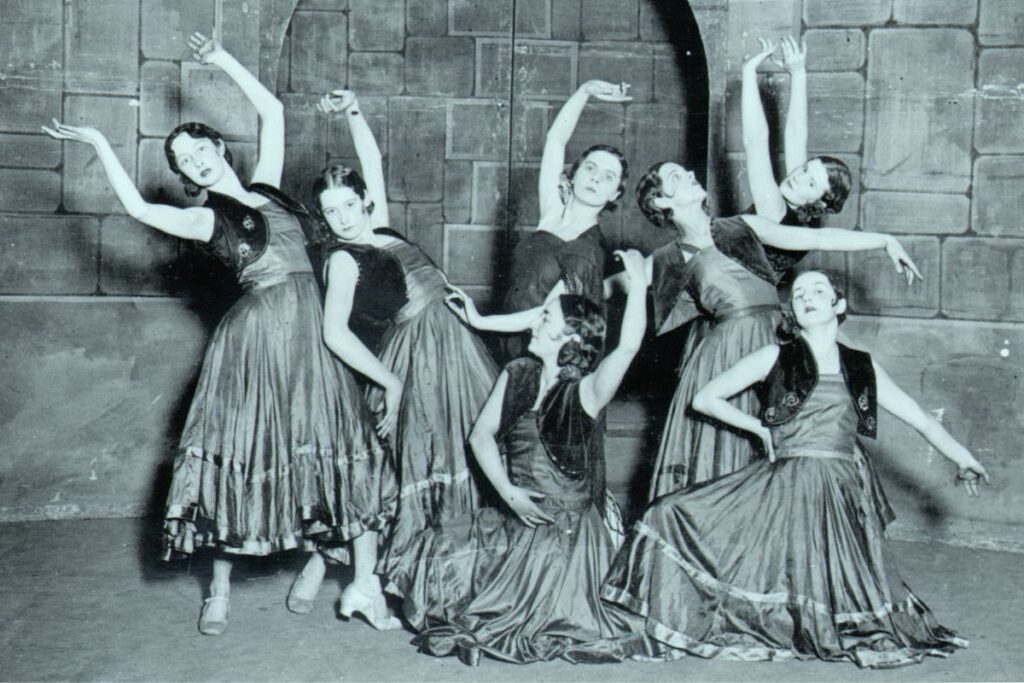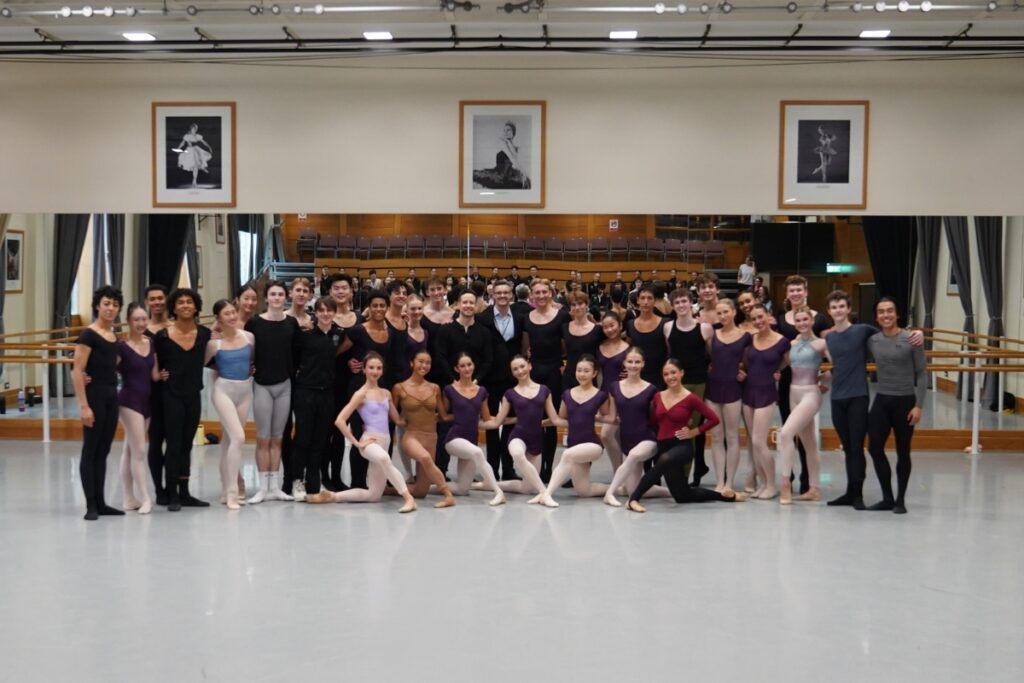Alumni spotlight: Ella Newton Severgnini and Viola Pantuso debut as Alice in Alice’s Adventures in Wonderland
Ella Newton Severgnini started her journey with The Royal Ballet School as a Junior Associate, before joining White Lodge in Year 7. She joined The Royal Ballet as an Aud Jebsen Young Dancer in 2022 and is now an Artist with the Company.
American dancer Viola Pantuso joined the School in Year 11. She graudated into The Royal Ballet as an Aud Jebsen Young Dancer in 2021, and was promoted to First Artist in 2024.
This year, Ella and Viola made their debuts as Alice in The Royal Ballet’s production of Christopher’s Wheeldon’s Alice’s Adventures in Wonderland – we spoke with them both about their experience.
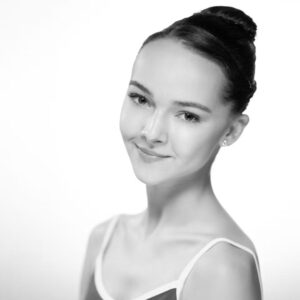
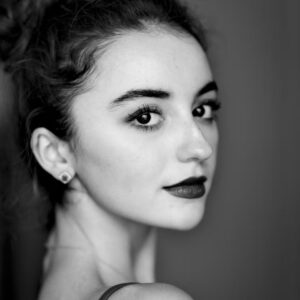
How did you feel when you found out you were going to play the role of Alice?
Ella: I was shocked. I was at the end of my first official season so I wasn’t expecting to be cast in a principal role. I’d never done a solo on stage with the Company and the prospect of dancing a three-act ballet was daunting, but I felt more excited than anything else.
Viola: I was speechless for a few days. Alice is an iconic character, and her story has been a part of so many people’s childhoods, including mine. To step into her shoes felt like an incredible honour, but also a big responsibility. What made it more special was that Alice’s Adventures in Wonderland was the first ballet I saw the Company perform while a student at the School.
What was the structure of rehearsals and where did you start?
Ella: It was a crazy first couple of weeks. At our first rehearsal we started with the prologue pas de deux where Alice and the Knave first meet. Alice is in every scene so our coach, Jillian Vanstone, taught us each scene slowly out of context. Once we understood Alice’s story within each scene, layers were added with different characters and props introduced.
Viola: In the individual sessions, we focussed on refining the technical details and nuances of the character. Jillian Vanstone was such an invaluable mentor as she has a deep understanding of Christopher Wheeldon’s choreography, combined with her own experience as Alice with the National Ballet of Canada. She shared so much wisdom about how to approach the role and how to bring out the storytelling through the choreography.
What did you enjoy about working with Christopher Wheeldon and his choreography?
Ella: Chris’s choreography is clever in the way it works in tandem with Joby Talbot’s music. He does a lot of narrative ballets so it’s not all about the steps. The second the story is lost, that’s a problem for him. He’s very particular, he’ll tell you exactly what he wants you to do, which I love. He gave me loads of information after the studio call, not just about the technical things but about the narrative elements too.
Viola: I love how detailed his footwork is, and that every movement has a purpose. There’s also this perfect marriage between the music and movement. It pushes you to grow in ways you don’t expect. It’s always incredibly inspiring and productive to work with him. He has a clear vision for his work, and his ability to communicate that vision makes him a dream to work with. Every rehearsal with him was a valuable learning experience.
How did you find the transition from the rehearsal studio to the stage with sets and props?
Ella: In my debut, we were doing the final part of the trial scene and Cesar (Corrales) was in a floaty shirt and it must have got caught in the back of my dress, and it ripped the whole sleeve so he had his sleeve flying around! In my second show, as I went down the jelly my headband got caught and ripped off so I had to do the rest of the act without it. You learn how to deal with those things and not let them affect you whilst you’re telling the story.
Viola: That was the most exciting part of the process for me; seeing Wonderland come to life. One of the more challenging aspects for me was working with the props. They are so integral to the storytelling but I had to continually stay switched on physically and mentally. We had backup plans in place just in case things didn’t go as planned. It made me appreciate all the teams at The Royal Ballet and Opera and how they work together to bring such a complex and magical world to life.
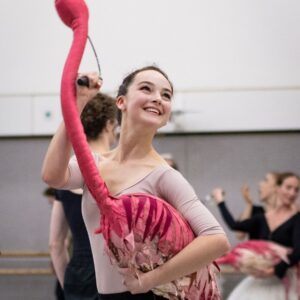
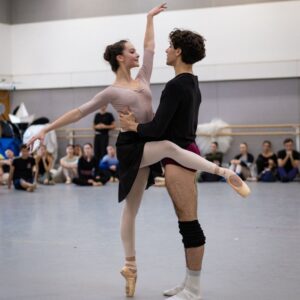
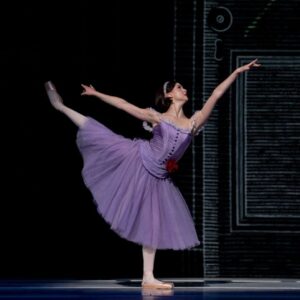
This role requires a lot of acting. What was your approach to incorporating this into your performance?
Ella: The role of Alice was created on Lauren Cuthbertson, who was the Red Queen in this production, and I was lucky because she took me under her wing and suggested things that would help me. She advised me to write a script for the entire ballet, from start to finish. That was pivotal for me because, at every moment of the ballet, I knew what I was meant to be expressing.
Viola: Alice’s emotional journey is so distinctive and dynamic. My focus was on ensuring her transitions between emotions felt authentic and seamless. I wanted the audience to experience her joy, curiosity, and challenges in a way that was engaging and believable. There’s a sense of spontaneity and playfulness in her character that I could connect to my inner child.
What did you find most challenging about the role and the process?
Ella: I expect everything to be perfect within a minute of doing it so the biggest challenge was trusting the process. After the first couple of weeks, I had a moment when I genuinely wondered if I was ever going to be able to do it. Everyone told me I was going to be fine which is hard to believe when you’ve got 5,000 steps flying around in your mind. They were right though, as time passes, things get better and easier. It is a big learning curve to not be too hard on myself.
Viola: Carrying a full three-act ballet for the first time. While I’ve performed lead roles before, this was a new level of responsibility, which required precise focus and lots of energy. I had to remind myself to stay present on one moment at a time. It turned out that in the shows I was able to lose myself in the character while staying alert to the intricacies of the beautiful choreography.
Is there anything you used during the process that you learnt at the School?
Ella: I had a special teacher at Upper School, Nicola Tranah. I still carry with me the feedback she gave me. It’s a difficult transition from your graduate year at the School to company life because you don’t receive the same amount of feedback in class that you do at school, classes are treated as warm-ups for shows. We have amazing coaches who give feedback but it’s not to the same extent as in your training. Ms Tranah understood me. If you have a connection with a teacher where everything they say resonates with you, hold onto it.
Viola: At the School, I was given a technical foundation and the space to explore who I wanted to be as a dancer. It helped me to start embracing my individuality, which I continue to carry with me. I’m grateful for everything I learned there. Ms Tranah was one of my favourite teachers. Not only did she help shape the way I approach my work, in terms of technique, but in understanding how to move with purpose and express myself emotionally through movement.
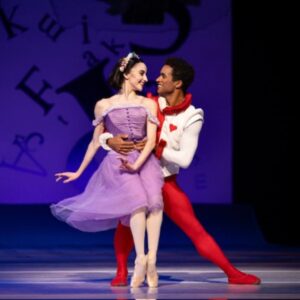
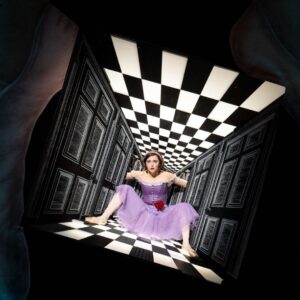
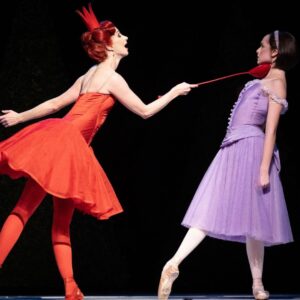
How did you deal with any nerves you had?
Ella: I was more nervous about that first studio call than my stage call. I’m very comfortable on stage – it’s my happy place. I honestly enjoyed every single moment of doing the show, it was so magical! I got butterflies when I heard the music, but I was fine. The beautiful thing about Alice is that the story carries you through. Although it’s difficult not having breaks, it eliminates nerves because you don’t have time to think about what’s coming next, you just do it. I also think that because this was my first principal role, I had a certain naivety about it all, which suited the role. I’ll never have that again so that was special.
Viola: The first performance was the opening show of our 2024-2025 season and honestly it was an out-of-body experience. The adrenaline took over and everything felt like a blur. I was caught up trying to take it all in but there was a special moment side of stage before the show started that I’ll always remember. Kevin O’Hare gave me a little dance and a big hug which lifted me off the ground. We were both so excited! He probably doesn’t know it, but that very special gesture and his energy carried me through the performance. It was such a celebratory moment in my journey and a memory I’ll treasure forever.
All photographs by Andrej Uspenski @dancerdiary

